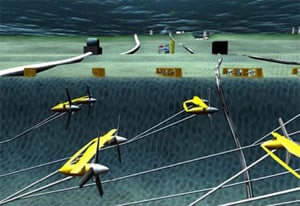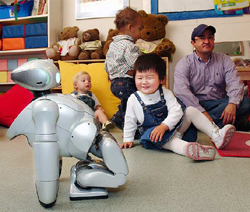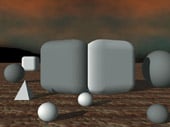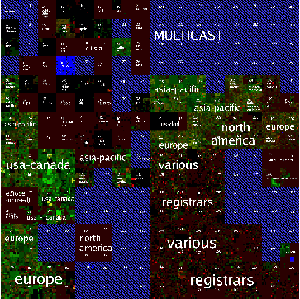Latest Gear Live Videos
TiVo Literally Counts Top Ten Super Bowl Spots

Posted by Sheila Franklin Categories: Editorial, Home Entertainment, Misc. Tech, Videos,
While there are plenty of top ten lists on the Net reporting the popularity of Super Bowl commercials, TiVo has an actual way of gauging which of the exact spots are literally watched the most by viewers. We chatted with Todd Juenger, Vice President of Audience Research and Measurement, who gave us his top 10 list in terms of the most viewed during the event. That list and our interview with Todd, including all you ever wanted to know about TiVo accumulating data and what it means, after the jump.
Click to continue reading TiVo Literally Counts Top Ten Super Bowl Spots
Read More  | TiVo
| TiVo
Advertisement
To Clone or Not to Clone

Posted by Sheila Franklin Categories: Design, Editorial, Misc. Tech, Science,
 We understand assembly lines pumping out electronic gadgets at unholy speeds so that the masses can have their toys. But when the FDA announced that cloned beef is acceptable to eat once the USDA has determined that we are “used to the idea,” we just had to wonder. Whatever happened to natural foods? We are still getting accustomed to the hormones injected into our meat that causes puberty in children a few years earlier than seems natural. Genetically altered grain runs rampant. But do we really want to eat a poor animal who has been created solely through scientific means? Should that be considered organic? What do you guys think?
We understand assembly lines pumping out electronic gadgets at unholy speeds so that the masses can have their toys. But when the FDA announced that cloned beef is acceptable to eat once the USDA has determined that we are “used to the idea,” we just had to wonder. Whatever happened to natural foods? We are still getting accustomed to the hormones injected into our meat that causes puberty in children a few years earlier than seems natural. Genetically altered grain runs rampant. But do we really want to eat a poor animal who has been created solely through scientific means? Should that be considered organic? What do you guys think?
Read More  | Washington Post
| Washington Post
Don’t Swat This Fly

Posted by Sheila Franklin Categories: Design, Misc. Tech, Science,

Shades of Jeff Goldblum! Engineer Robert Wood has been working on a robotic fly since the late 90’s. After studying houseflies, bees, and fruit flies, he and his team created a layered composite that bends when electricity hits it, creating a micro-scale gearbox hooked to the wings. While the mass of a fly’s wings was figured to be 80 watts per kilo, this design produced more than 400W.
The Department of Defense liked his idea so much that they funded him, hoping the technology will be used for such applications as lost miners and military spying. Wood claims that he is only a third of the way there, as the next steps are to create an “on-board” power source and then teach the little buggers to fly en masse.
Read More  | Harvard Magazine
| Harvard Magazine
Stanford Develops Longer-Lasting Batteries

Posted by Sheila Franklin Categories: Science, Storage, Transportation,
 Stanford researchers have figured out a way to extend the life of lithium-ion batteries up to 10 times. Silicon nanowires will soon turn a 2 hour battery into twenty for cellphones, laptops, cameras, MP3 players, and other portable devices. Yi Cui, leader of the group, feels that the applications could include cars and storage generated by solar panels. A patent application has been filed on the Li-ion and Cui is counting on a current battery manufacturer hooking up with the idea. We hope so, too.
Stanford researchers have figured out a way to extend the life of lithium-ion batteries up to 10 times. Silicon nanowires will soon turn a 2 hour battery into twenty for cellphones, laptops, cameras, MP3 players, and other portable devices. Yi Cui, leader of the group, feels that the applications could include cars and storage generated by solar panels. A patent application has been filed on the Li-ion and Cui is counting on a current battery manufacturer hooking up with the idea. We hope so, too.
Read More  | nano techwire
| nano techwire
Self-Googlers, Come Out of the Closet

Posted by Sheila Franklin Categories: Corporate News, Google,

Read More  | Pew
| Pew
Scientists Explore Underwater Turbine Usage

Posted by Sheila Franklin Categories: Design, Misc. Tech, Science,

Rick Driscoll, the director of Florida Atlantic University’s CEOET (Center of Excellence in Ocean Energy Technology) and crew are developing underwater turbines that will create power from the Gulf Stream. They would be moored 1,000 ft. below the surface and should be capable of going through 8 billion gallons per minute. That’s enough energy to power up one third of the state of Florida. The team will be testing a prototype early next year. We wonder if, when this becomes feasible on a large scale, someone will find a way to harness it in, let’s say, a jacuzzi. We suspect the power companies would not be thrilled.
Read More  | treehugger
| treehugger
Eating Turkey May Involve Trust Issues

Posted by Sheila Franklin Categories: Science,

If you have already had your post-Thanksgiving nap, you might be interested to know that the molecule tryptophan may have another use besides making you nod off. Researchers from Oxford University say that the chemical precursor to serotonin may also induce trust. Volunteers were given a drink that depleted their tryptophan. Although the final results are not in from the experiments, they found that when they reduced it, the chemical also lowered “the reward value of cooperating.” We just wonder why every family Thanksgiving feast we have ever attended has ended in a tussle.
(Happy Turkey Day!)
Read More  | Technology Review
| Technology Review
QRIO Sparks Interest in Toddlers

Posted by Sheila Franklin Categories: Editorial, Misc. Tech, Science,
 Researchers claim that adults can only hold an interest in a robot for about 10 hours but a new study proves this is not the case with children. The 2 foot tall QRIO (pronounced “curio”) was developed at the University of California with a crude sense of touch. When unleashed on a roomfull of toddlers between the ages of 18 to 24 months, he would turn his head, giggle, and even dance if they interacted with him. They became so used to his presence that he hung around about five months. The researchers noticed that the kids would touch his face first, then other parts of his body, just as they would with another child.
Researchers claim that adults can only hold an interest in a robot for about 10 hours but a new study proves this is not the case with children. The 2 foot tall QRIO (pronounced “curio”) was developed at the University of California with a crude sense of touch. When unleashed on a roomfull of toddlers between the ages of 18 to 24 months, he would turn his head, giggle, and even dance if they interacted with him. They became so used to his presence that he hung around about five months. The researchers noticed that the kids would touch his face first, then other parts of his body, just as they would with another child.
During another phase of testing, QRIO only danced when the tots touched him. Needless to say they quickly lost interest. When he again responded, the toddlers began to interact once more, but when his batteries went out, some of them cried. We wonder what long-lasting effect QRIO will have on these same children now that they have lost their new playmate.
Read More  | Live Science
| Live Science
Robots Fooled by Optical Illusions

Posted by Sheila Franklin Categories: Misc. Tech, Science, Software,
 Researchers at University College in London have discovered that robots cannot detect optical illusions. The team installed software in bots to give them abilities for processing visual cues into an artificial nerve network. For example, in a simultaneous brightness contrast of two identical tiles, a human will see one tile with a dark background as lighter than one in front of a paler background. The program fooled the software just as it would a person. Lead study author R. Beau Lotto and team found that vision is composed of experiences rather than absolutes. We just think of it as a one-up on robots for us humans.
Researchers at University College in London have discovered that robots cannot detect optical illusions. The team installed software in bots to give them abilities for processing visual cues into an artificial nerve network. For example, in a simultaneous brightness contrast of two identical tiles, a human will see one tile with a dark background as lighter than one in front of a paler background. The program fooled the software just as it would a person. Lead study author R. Beau Lotto and team found that vision is composed of experiences rather than absolutes. We just think of it as a one-up on robots for us humans.
Read More  | National Geographic
| National Geographic
ISI Maps Internet

Posted by Sheila Franklin Categories: Internet, Misc. Tech, Science,

USC’s Information Sciences Institute really needs to get a life. Beginning in 2003, the researchers began collecting data. They eventually created a map of the Internet. Their ISI computers searched about 2.8 billion IPs and received about 187 million answers. They then used one dot per addy and came up with a diagram of 9 x 9 feet, the brighter images showing the area of the greater number of computers.
John Heidemann, head of the project, says that the map is actually only a portion of what is out there since some computers may have been shut off or behind a firewall, but hopes it will help researchers study the spread of viruses. A 24 x 36-inch version of the map (with about 65,000 addresses squeezed into one dot) will become available, so contact ant@isi.edu if you would like to get a copy.
Read More  | ISI
| ISI
Advertisement
© Gear Live Inc. {year} – User-posted content, unless source is quoted, is licensed under a Creative Commons Public Domain License. Gear Live graphics, logos, designs, page headers, button icons, videos, articles, blogs, forums, scripts and other service names are the trademarks of Gear Live Inc.










